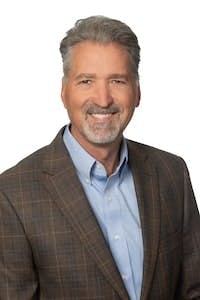About the author:
This article was compiled by the Water & Wastes Digest editorial staff. The WWD editorial staff can be reached at [email protected]. To learn more about E3 Consulting Services, visit the company's website at www.e3co.com.
Paul Plath is the president and CEO of E3 Consulting Services LLC, which has a 22-year history as a technical and strategic business advisor in the energy, industrial and public utility sectors. Water & Wastes Digest spoke with Plath about the water and wastewater industry, nutrient recovery and public-private partnerships.
Changes in the Water & Wastewater Industry
WWD: Over your three-plus decades as an independent engineer, how has the water and wastewater industry changed? Are you seeing more innovative solutions to address waste management challenges?
Plath: I first got involved in solid waste management projects in the mid-1980’s during the buildout of large-scale waste-to-energy plants throughout the East and Midwest. The economics of early plants was primarily driven by scarcity — or anticipated scarcity — of landfill space and to a much lesser degree, solid waste reuse, reduction and material recovery. The first mass-burn plants were really just about volume reduction, with a limited amount of material recovery. As time went on however, we saw more focus on material recovery with the building of material recovery facilities (MRFs) to get potentially valuable recyclable materials out of the waste stream prior to incineration or landfilling. This trend continues today, particularly with a focus on organic materials that can be converted to higher value products, like renewable natural gas (RNG), soil amendments and even animal feed. It’s an especially important shift given the critical mineral supply gap.
Organics Recovery & Reuse
WWD: What is driving the interest in organics recovery and re-use?
Plath: The interest is coming both from the financial community that is pursuing greener environmental, social and corporate governance (ESG) goals as well as the emergence of larger and more liquid markets for green fuels, such as RNG and renewable diesel that can be produced from organic materials. Increased restrictions on wastewater disposal from large confined feed operations (dairy, swine and poultry) is driving development of organics recovery and treatment.
What’s more, the uncertainty in traditional recycled material markets (e.g. China’s “National Sword” ban on most imported recycled materials) is driving investors to look for opportunities that are not dependent upon overseas markets for the feedstocks or products.
We are seeing a boom in interest in anaerobic digester (AD) projects that use agricultural or municipal organic waste to produce RNG and soil amendments and fertilizers, and one of our projects involves the collection and processing of grocery store meat, fruit and vegetable discards into high-quality animal feeds. This is a particularly interesting project because the resulting animal feed is actually human food-grade, which is attractive to customers that are producing and promoting premium animal feed products.
RELATED: From Waste to Gas
New Technologies for Organic Waste Recovery
WWD: Are new technologies playing a role in the new organic waste projects?
Plath: Definitely. In the AD space, the U.S. has been far behind Europe with respect to municipal organic waste collection and processing technologies. We are starting to see more proven European technologies enter the U.S. market that can accommodate a wider range of organic feedstocks and produce better yields of biogas, more useable byproducts and less effluent.
For example, we are seeing novel technologies for automated unpackaging of expired foods and beverages that previously would have been landfilled but can now be used as feedstock for AD projects. A number of smaller-scale packaged technologies for biogas to RNG upgrading, compression and transportation have also entered the market, which has the potential to improve the economics for smaller facilities.
Impact of China’s Imported Recycled Materials Ban
WWD: You mentioned China’s ban on most imported recycled materials which started in 2018 and went into full effect earlier this year. This has had a dramatic impact on the U.S. recycling markets, but are you seeing any opportunities as a result?
Plath: U.S. companies and investors are increasingly looking at ways to either meet the very strict China National Standards for imported recycled materials or build new domestic processing capabilities to utilize those recovered materials in domestic and other markets. We are working with one company now that is in advanced development of several new plants in the U.S. to process old corrugated containers and mixed waste paper into recycled fiber pulp clean enough to meet China’s cleanliness standards.
China still has a huge demand for packaging container fiber, and with the import bans, must find alternative sources. The value of new or recycled fiber in China has increased substantially since the ban was implemented.
These new facilities will use a combination of tried-and-true pulp making technologies as well as advanced processing, cleaning and wastewater treatment systems that will be necessary to meet the strict import quality standards. On the plastics side, we are also seeing multiple new project proposals to convert mixed recycled plastics into base feedstocks, “green” transportation fuels and hydrogen. Our clients are typically wary of technology risks, so previously proven technology is a must here. The markets for the products, however, will remain the key issue for investors.
Public-Private Partnerships
WWD: Changing gears to P3 projects, E3 was the independent engineer for the Vista Ridge SAWS project, one of the largest P3s in the U.S. What did you learn from your involvement and do you think that the country will see more of these types of infrastructure projects where a private corporation is involved in funding a public water or wastewater project?
Plath: The SAWS project was a huge success and demonstrated the value of the P3 model for large infrastructure projects. Consortiums with experienced private developers and contractors have access to more sources of financing and expertise to execute a large project on time and on budget. Many states and municipalities no longer have the in-house staff or expertise to fully manage large infrastructure projects anymore and will be more dependent upon private partners to get these projects done.
The P3 model also allowed public participants to put much of the typical development risk (siting and permitting) onto the development parties. With the newly signed infrastructure bill, we believe that the P3 approach will absolutely be part of the mix for achieving the infrastructure buildout within the timeframe the funding will be available.

